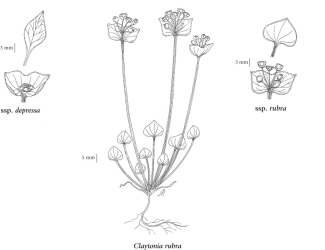Claytonia rubra (Howell) Tidestr.
redstem springbeauty
Montiaceae (Purslane family)
(Previously in Portulacaceae)
Introduction to Vascular Plants
redstem springbeauty
Montiaceae (Purslane family)
(Previously in Portulacaceae)
Introduction to Vascular Plants
© Werner Eigelsreiter (Photo ID #7109)
